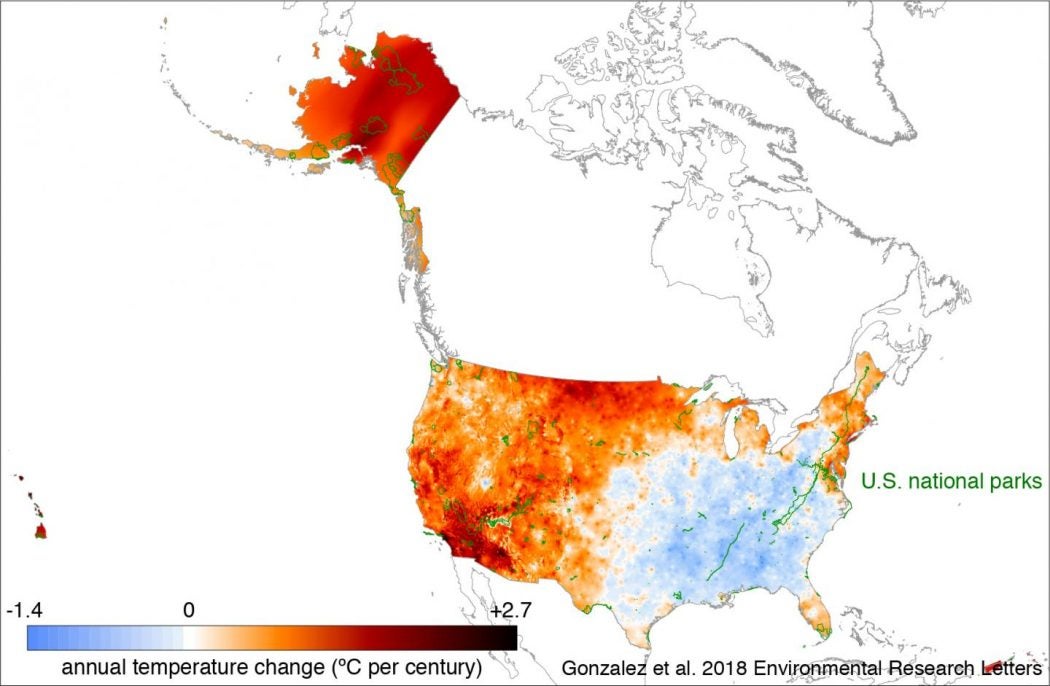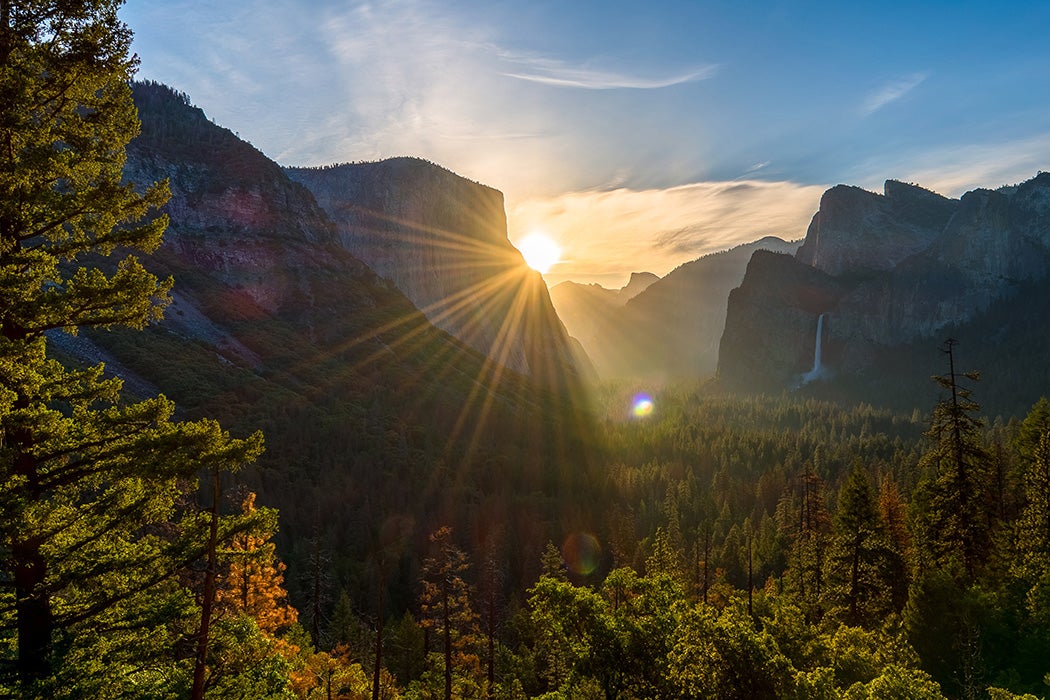Exactly what is a Glacier National Park if all of its glaciers have melted? And should Joshua Tree National Park still keep its name if there are no more Joshua Trees left there? These aren’t just remote possibilities, but very real threats.
Over the past century, average temperatures in our national parks rose at twice the rate compared to the country’s other regions. At the same time, the parks also have been getting less rainfall than other areas in the Unites States. That means more fires, more ice retreating, less wildlife, and the overall reserves’ ecosystems falling apart. In the coming decades, many parks would lose the iconic attractions they have been historically famous for, scientists warn. And the parks do more than please the eye. “National parks conserve our most intact natural places,” says Patrick Gonzalez, a forest ecologist and climate change scientist at the University of California, Berkeley. “They also help assure human well-being by protecting water resources and storing carbon.”
To understand the risks, Gonzalez and his team of scientists at University of California, Berkeley and University of Wisconsin-Madison used the historical climate data readings gathered monthly since 1895 at weather stations around the country and created maps of the average annual temperature and rainfall totals all over the United States. They found that from 1895 to 2010 the temperatures in national parks increased by over one degree Celsius—about double the rate compared to the rest of the nation, while the annual rainfall dropped 12 percent compared to only three percent for the rest of the United States. Alaska and its national parks had the most dramatic spikes in temperature, while Hawaii had most of the dry spells.
A one degree Celsius increase in over a century may sound rather innocuous. But the problem is that if mankind continues to emit greenhouse gasses at the current rate, scientists expect the temperatures to increase by as much as nine degrees Celsius or 16 degrees Fahrenheit by the end of the century. At that point, many plants and animals, currently comprising the parks’ ecosystems won’t be able to survive where they live now. That rate of change, scientists say, is too fast for many plants and animals to adapt, so they will either disappear or migrate somewhere else. More than 80 percent of species, from grizzlies to bighorn sheep to white-tailed ptarmigans, are already changing their habitat ranges because of climate change.
The National Park Service centennial essay series listed several clear threats. Glacier National Park may see its last glacier melt by 2030. Rocky Mountain National Park is losing its pine forests to pine needle beetles that no longer die out in winter due to warming weather. In the Everglades National Park, the rising seas are threatening to swallow the mangroves. And the Joshua trees are dying in the park named after them because of a drought more severe than any others of the past five hundred years.
Want more stories like this one?
We may think that the built environment is most susceptible to the ill effects of climate change—think of cities suffocating during heat waves or coastlines flooded by hurricanes—but the delicate ecosystems of the our natural reserves are just as vulnerable if not more. One reason for that is that the parks are located in unique and in many cases extreme environments, such as deserts, mountains or in the Arctic region of Alaska, and thus need to retain their delicate climate balance to remain intact. “We tended to put our National Parks in the most beautiful places in the country such as mountains or Alaskan regions,” says John Williams, a professor of geography at the University of Wisconsin-Madison and one of the study authors. “Higher altitudes are seeing higher rates of temperature changes and many parks are out in the West, which has had a higher rate of warming and drying.”

Sticking to the Paris Agreement could help, as it would limit the temperature rise to one to three degrees Celsius. “Reduced emission would lower the rate of heating in our national parks by one half to two thirds by the end of the century,” Gonzalez says.
Nonetheless, Alaska would still see most of the warming, while the Virgin Islands and the southwestern U.S. would likely get the least rainfall. “It is important to note that even if we really do a strong mitigation of greenhouse gases, the national park system is still expected to see a two-degree temperature change,” Williams says.
Doing nothing would change our national treasures forever. They will not disappear geographically, he clarifies, but will lose their legendary features that millions of people travel to see and marvel at every year.
“Yellowstone may convert from pine forest to grasslands, if the trees can’t grow fast enough from fire to fire, and the glaciers, which are already melting, will melt away,” Williams says, pivoting to the fundamental question, “so what is Glacier National Park if it doesn’t have glaciers anymore?”







